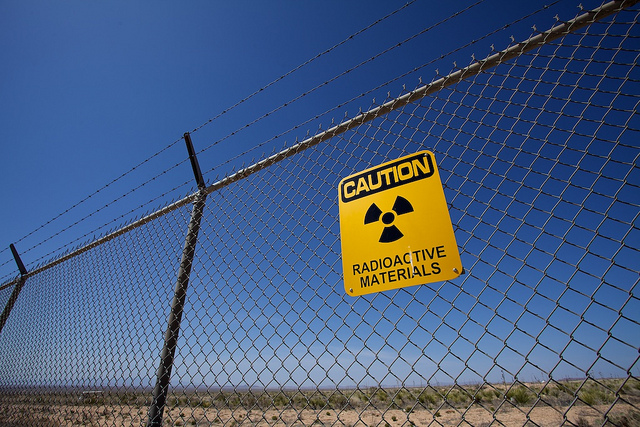DWP 2016 and extended nuclear deterrence
Posted By
Rod Lyon
on March 3, 2016 @ 06:00

Back in 2013, Ashley Tellis nicely captured some of the core truths about Australia and its relationship to nuclear weapons:
‘Currently, the sole example of an Asian state possessing latent nuclear capabilities, but with an arguably low dependence on nuclear weaponry, is Australia. Thanks to favorable geography and the benefits of US extended deterrence, Australia enjoys the best of both worlds: distance from the most significant threats, yet protection by the globe’s most capable power. Should technology or politics ever alter these realities, however, Australia could develop significant nuclear capabilities. The country has a fascinating, though not well-known, history of entanglement with nuclear weapons.’
Australia’s unique status, complemented by its conflicted identity on nuclear weapons, means that any official government commentary on the nuclear issue attracts exegetical analysis. Large conclusions tend to be drawn from brief sentences. But in the case of DWP 2016, the challenge is greater than usual. The document contains only fleeting references to nuclear matters, and extended nuclear deterrence rears its head only once.
The relevant piece of text is para 5.20, reproduced here to keep the topic in context:
‘Australia’s security is underpinned by the ANZUS Treaty, United States extended deterrence and access to advanced United States technology and information. Only the nuclear and conventional military capabilities of the United States can offer effective deterrence against the possibility of nuclear threats against Australia. The presence of United States military forces plays a vital role in ensuring security across the Indo-Pacific and the global strategic and economic weight of the United States will be essential to the continued effective functioning of the rules-based global order.’
So, what do those sentences tell us about current Australian government thinking in relation to nuclear weapons? In truth, remarkably little. Some might see a hint of ‘sole purpose’ in the second sentence—namely, the suggestion that we rely on US nuclear capabilities solely to offset nuclear threats. But a careful reading doesn’t support that interpretation. The paragraph doesn’t, for example, offer any judgment as to what deters the possibility of conventional threats against Australia, so leaving open a potential role for US nuclear capabilities in that broader role.
Apart from the cautiously-phrased thoughts offered in para 5.20, nuclear aficionados will search in vain for judgments about the continuing efficacy of nuclear deterrence, whether in its general or extended form. The word ‘nuclear’ appears only ten times in the document—seven times in relation to North Korea, South Asia, Iran and the broader issue of WMD; once in relation to the specialised support that Defence might be called upon to offer in response to civil emergencies; and twice in para 5.20. While simple word counts don’t prove much, ‘nuclear’ appeared 26 times in the 2009 White Paper and 27 times in 2013. It’s hard to imagine that the core issues have become less salient in the intervening years.
In this year’s White Paper there’re no statements about the continuing resiliency of nuclear deterrence as an inhibition on great power war. Similarly, there’s no judgment that our major ally will continue to rely upon nuclear deterrence to underpin its strategic power. There’s no speculation of the sort offered in the 2009 version about the ‘significant and expensive’ alternatives that might confront Australia if US extended nuclear deterrence were to prove incredible. The 2013 White Paper shied back from that hypothetical and this latest offering exercises a similar discretion.
Nor is there any coverage of a more worrying possibility: that other US allies—either in Asia or elsewhere—might begin to find US nuclear assurances strategically unsatisfying and move towards their own indigenous nuclear arsenals. One of the most compelling reasons for Australia to support US extended nuclear deterrence is because it helps underwrite the security of nearly 40 US allies and partners worldwide, many of whom confront larger and more immediate adversaries than we do. If extended nuclear deterrence starts to break amongst that group of allies and partners, we’ll be living in a different world.
It’s probably expecting too much to hope that any Australian Defence White Paper would offer a comprehensive view of Australian thinking on nuclear weapons. But nor should government statements shy away from the issue to the extent this one does. With a wave of nuclear modernisation occurring across the globe, including in the US, and the world settling into a Second Nuclear Age markedly different from the first, governments should be prepared to articulate and defend their thinking about nuclear strategy when they have the opportunity. Bald statements about our continuing faith in extended nuclear deterrence are no longer enough. We should be exploring options to strengthen deterrence in a rapidly-changing world.
Rod Lyon is a fellow at ASPI. Image courtesy of Flickr user Charles.
Article printed from The Strategist: https://www.aspistrategist.org.au
URL to article: https://www.aspistrategist.org.au/extended-nuclear-deterrence-and-dwp-2016/
[1] Image: http://www.aspistrategist.org.au/wp-content/uploads/2016/03/4515541717_b253cf43e2_z.jpg
[2] nicely captured: http://www.nbr.org/publications/issue.aspx?id=294
[3] conflicted identity on nuclear weapons: http://www.tandfonline.com/doi/abs/10.1080/10357718.2010.489994#.Vs5CI_l95hE
 Print This Post
Print This Post